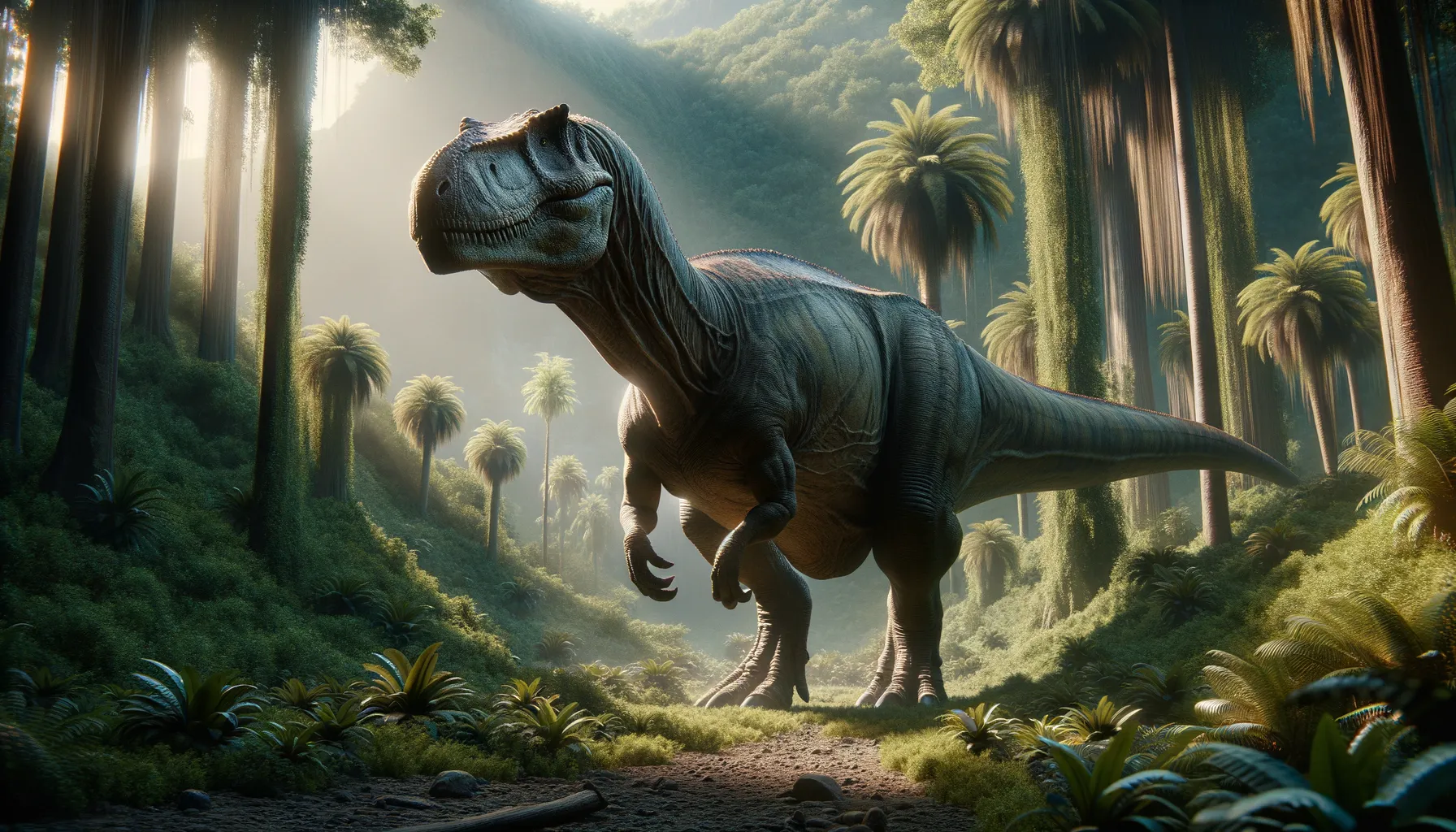
Narambuenatitan
The gentle giant of the ancient lands.
Period
Cretaceous
Length
Reached lengths of approximately 15 meters.
Height
Stood about 5 meters tall at the shoulder.
Weight
Weighed up to 40 tons.
Narambuenatitan was a massive herbivorous dinosaur that roamed the Earth during the Late Cretaceous period. It belonged to the group known as titanosaurs, which were among the largest land animals to have ever lived. Its lengthy body and robust limbs suggest a life spent slowly ambling through lush, prehistoric landscapes, feeding primarily on plants. This dinosaur's remains provide valuable insights into the diversity and adaptations of sauropods during its time.
Diet
Narambuenatitan was a herbivore, subsisting mainly on the plentiful plant life available during its era. It likely fed on ferns, cycads, and conifers, using its long neck to reach vegetation both high and low.
Hunting
As a herbivore, Narambuenatitan did not hunt. It likely had to migrate in search of ample feeding grounds annually, following the availability of plant resources across its habitat.
Environmental challenges
Narambuenatitan faced environmental challenges such as climatic changes and varying food availabilities, which required adaptability in migratory patterns. Predators like large theropods posed a threat, necessitating the use of their size for defense. Seasonal changes may have impacted their reproduction cycles and influenced group migration habits.
Speed
Slow, due to its large size and weight.
Lifespan
Estimated to be around 70-100 years.
First discovery
Discovered in Patagonia, Argentina in 2004.
Fun Facts
- Narambuenatitan was a long-necked dinosaur known as a sauropod, which lived during the Late Cretaceous period.
- It was discovered in Argentina, one of the rich grounds for dinosaur fossils in South America.
- The name Narambuenatitan means 'Naram Buena Titan', referring to the region it was found and its gigantic size.
- Like most sauropods, Narambuenatitan was herbivorous, feeding on a diet of plants and leaves.
- Its fossil remains were first described in 2011, making it a relatively recent discovery in the dinosaur world.
- Narambuenatitan was part of the Titanosauria group, known for being some of the heaviest creatures to have walked the earth.
- Despite their massive size, fossils suggest that they might have traveled in herds for protection.
Growth and Development
Narambuenatitan likely grew continuously throughout its life, similar to other sauropods, reaching its massive adult size after several years. Juveniles would have been more vulnerable to predators, depending on herd protection. The process of growth involved significant energy consumption, necessitating a constant supply of vegetation.
Habitat
The habitat of Narambuenatitan included vast floodplains and forests of Patagonia, providing ample food and space for such large creatures. These dinosaurs likely lived in herds, with their expansive range covering different types of vegetation. Seasonal changes would have dictated their migratory movements in search of food.
Interaction with other species
Narambuenatitan likely coexisted with other dinosaur species, such as predatory theropods and other herbivores. Its large size would have deterred many predators, but eggs and juveniles may have been at risk. Communication and social behaviors within its herd were likely key for survival, especially when faced with threats.
Natural lifespan
Narambuenatitan is believed to have lived for several decades, up to a century.
Reproduction
Reproduction in Narambuenatitan involved laying eggs, similar to other sauropods. Nesting sites would have been chosen carefully to ensure safety from predators and environmental hazards. Clutch sizes were likely moderate, with parental care possibly limited post-hatching.
Social behaviour
Narambuenatitan likely exhibited social behavior by living in herds, which provided protection and a coordinated effort in migration. The herd structure may have involved complex interactions, including communication and potential hierarchical organization.
Fossil locations
The primary fossil remains of Narambuenatitan have been discovered in the Neuquén Province of Argentina. These fossils provide crucial insights into the distribution of sauropods in South America during the Late Cretaceous. The excavation of these fossils helps researchers understand the paleoecology of the regions these dinosaurs inhabited.
